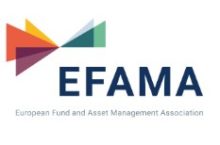The European Fund and Asset Management Association (EFAMA) has released today a new issue of its Market Insights series titled “ESG ratings of Article 8 and 9 funds: assessing the current market and policy recommendations for the future”. This research was motivated by the development of the market for ESG ratings against the backdrop of a growing demand for Article 8 and 9 funds, two ESG-related fund categories introduced by the Sustainability Financial Disclosure Regulation (SFDR).
We have analysed the ESG ratings assigned by two commercial providers – Refinitiv and Morningstar Direct – to a large sample of Article 8 and 9 funds, focusing on the differences between ratings given to the same funds by these firms and between ratings of Article 8 and Article 9 funds. Based on our findings, we present policy recommendations to help ensure that the market for ESG ratings functions well in the future.
Key findings
- The average Refinitiv ESG scores for Article 9 funds are slightly higher than those for Article 8 funds, however the differences are quite small. A large group of Article 8 funds have relatively high ESG scores, whereas some Article 9 funds have low scores.
- Morningstar sustainability ratings show the majority (54%) of Article 8 funds score higher than ‘average’ in their ESG risk management. For Article 9 funds, that figure is higher at 71%. However, 7% of Article 9 funds are ranked as ‘below average’.
- There is a positive correlation between ESG ratings provided by Morningstar and Refinitiv, but it is quite small. Many funds with a low Refinitiv score do well in the Morningstar ratings and vice versa. This is not too surprising because rating agencies base a fund’s ESG rating on their own proprietary assessment and these ratings bear little relationship with the SFDR classification.
Key policy recommendations
- Financial advisors and fund distributors should not necessarily offer only Article 9 funds to clients expressing strong ESG preferences, and regulatory rules should refrain from imposing such a requirement. What advisors and distributors need to do is verify if the fund’s ESG approach is aligned with the investor’s ESG preferences and views on risks.
- Article 8 or 9 status as well as ESG ratings, should not be used in isolation. To understand the ESG characteristics of a fund, advisors and distributors should use additional tools, including the European ESG Template (EET), national and international guidance, consulting services, precontractual and periodic reporting, etc.
- We see the need to develop an EU regulatory framework for ESG ratings, which should have three main objectives:
- imposing disclosure of the methodologies and data sources used to provide ESG ratings
- providing a level playing field by ensuring that all major firms assigning ratings to funds domiciled in the EU are within scope, including non-EU providers generating a certain percentage of EU revenues
- preserving market integrity by setting specific requirements for internal controls and governance processes to avoid conflicts of interest
- Supervisory authorities should gain a good understanding of the pricing and licensing frameworks involved to ensure a competitive market for ESG ratings that does not allow a small number of providers to set excessively high fees for their services.
- A voluntary code of conduct could be developed in the meantime to provide valuable insight for the future legal framework.
Vera Jotanovic, Senior Economist at EFAMA, commented: “From our analysis we conclude that different ESG scoring/rating methodologies have different measurement objectives, which are not necessarily in line with the SFDR classification or investors’ ESG preferences. Thus, these ESG measures should not be relied upon in isolation when advising retail investors”.
Bernard Delbecque, Senior Director for Economics and Research at EFAMA, commented: “The benefit of transparency in the methodology used by ESG ratings providers is that advisers and distributors should be able to rely on the providers whose measures most closely align with the investor’s ESG preferences”.
Tanguy van de Werve, Director General at EFAMA, commented: “Use of ESG ratings for funds is expected to grow rapidly as investor demand for ESG funds keeps increasing. Therefore, it is important that the market for ESG ratings functions well, with proper disclosure of decision-useful information. As the European Commission is currently considering a regulatory framework for ESG ratings, now is the right time to make sure that we have a market that is transparent and competitive, which will help channel investment where it is needed most for Europe’s transition to a climate-neutral economy.”







